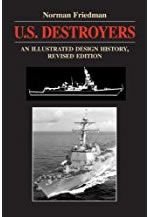USS McCall (DD-28)
refueling at sea, 1917
|
|
USS McCall (DD-28) was a Paulding class destroyer that operated in the western Atlantic in 1917 and from Queenstown in 1918.
The McCall was named after Captain Edward R. McCall, who took over command of the Enterprise during her dual with HMS Boxer on 5 September 1813. The McCall was laid down at Camden, New Jersey, on 8 June 1909, launched on 4 June 1910 and commissioned on 23 January 1911.
Before the US entry into the First World War the McCall had a fairly typical career, serving with the Torpedo Flotilla, Atlantic Fleet. During the summer she was based at Newport, Rhode Island and in Chesapeake Bay, and in the winter she took part in exercises in Cuban waters.
In 1916 the McCall joined the neutrality patrol, operating off New York and on the New England coast.
On 14 June 1917 she moved to New York to escort a troop convoy on the first part of the voyage to Europe. She continued to operate in the western Atlantic until January 1918 (and thus that period didn't count for the Victory Medal).
In January 1918 she departed for Queenstown, arriving on 22 February. Between then and 16 December she performed a mix of convoy escort and rescue missions.
In April-June 1918 the McCall escorted eleven merchant convoys, the most of any US destroyer in European waters.
Perhaps as a result of her high number of hours at sea a collection of photographs of her refuelling from the USS Maurnee (Fuel Ship #14) on 22 September 1917 has survived.
Amongst her wartime commanders was Fred T. Berry, later killed in the crash of the airship Akron (ZRS-4) on 4 April 1933.
Anyone who served on her between 11 February and 11 November 1918 qualified for the First World War Victory Medal.
After her return to the United States she took part in limited operations in 1919, under the command of Louis Emil Denfeld, a later Chief of Naval Operations. She was decommissioned on 12 December 1919. On 7 June 1929 she joined the Coast Guard to take part in the Prohibition Era 'Rum Patrol', and performed that role until October 1930. She was returned to the Navy on 18 October 1930 and decommissioned once again. She was sold for scrap on 2 May 1934.
Displacement (design) |
742t |
Displacement (loaded) |
887t |
Top Speed |
29.5kts design |
Engine |
3-shaft Parson turbines |
Range |
3,000nm at 16kts design |
Length |
293ft |
Width |
26ft 3in |
Armaments |
Five 3in/50 guns |
Crew complement |
86 |
Launched |
4 June 1910 |
Commissioned |
23 January 1911 |
Fate |
Sold for scrap 2 May 1934 |
 U.S. Destroyers: An Illustrated Design History, Norman Friedmann .
The standard history of the development of American destroyers, from the earliest torpedo boat destroyers to the post-war fleet, and covering the massive classes of destroyers built for both World Wars. Gives the reader a good understanding of the debates that surrounded each class of destroyer and led to their individual features.
U.S. Destroyers: An Illustrated Design History, Norman Friedmann .
The standard history of the development of American destroyers, from the earliest torpedo boat destroyers to the post-war fleet, and covering the massive classes of destroyers built for both World Wars. Gives the reader a good understanding of the debates that surrounded each class of destroyer and led to their individual features.